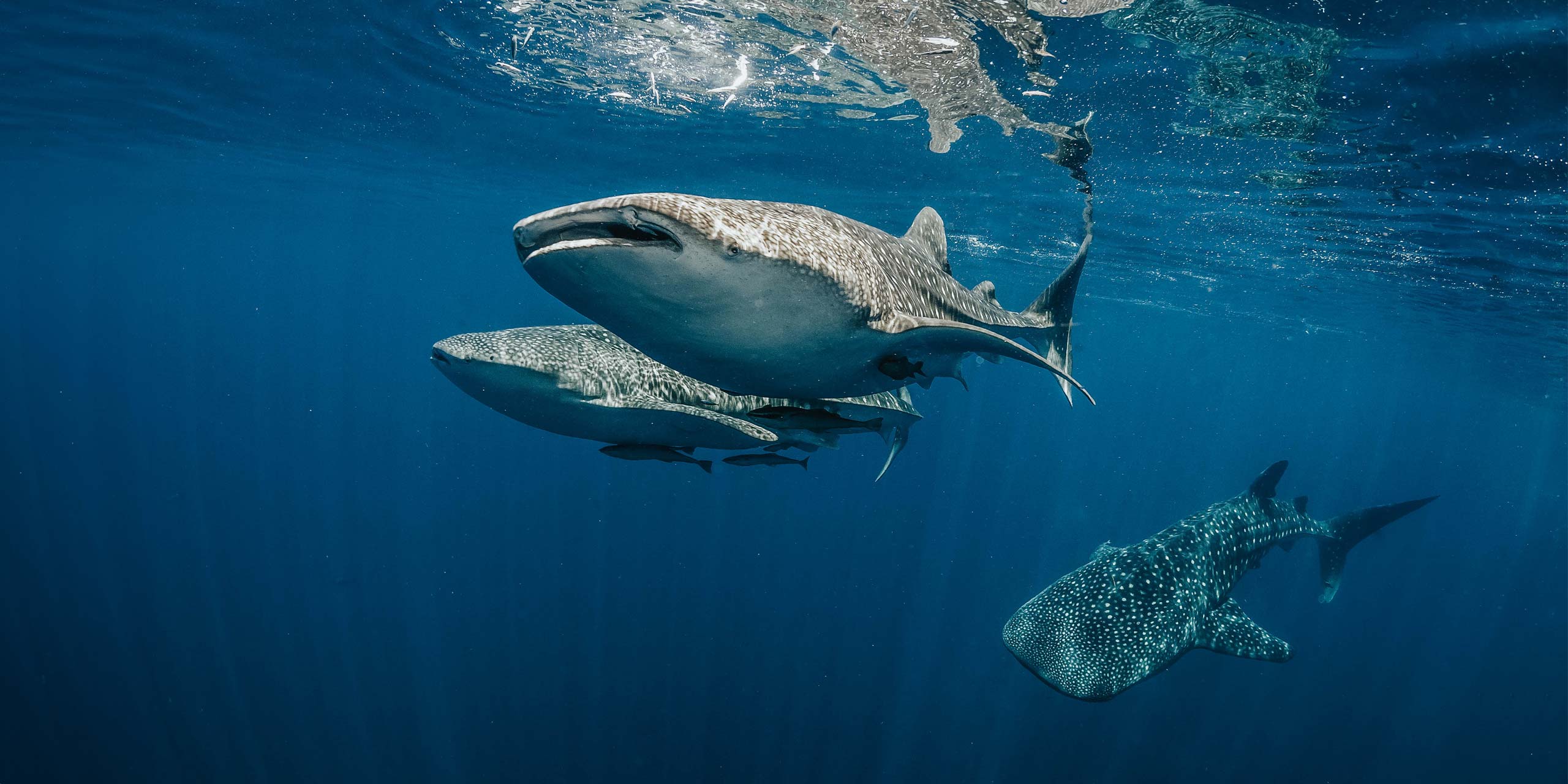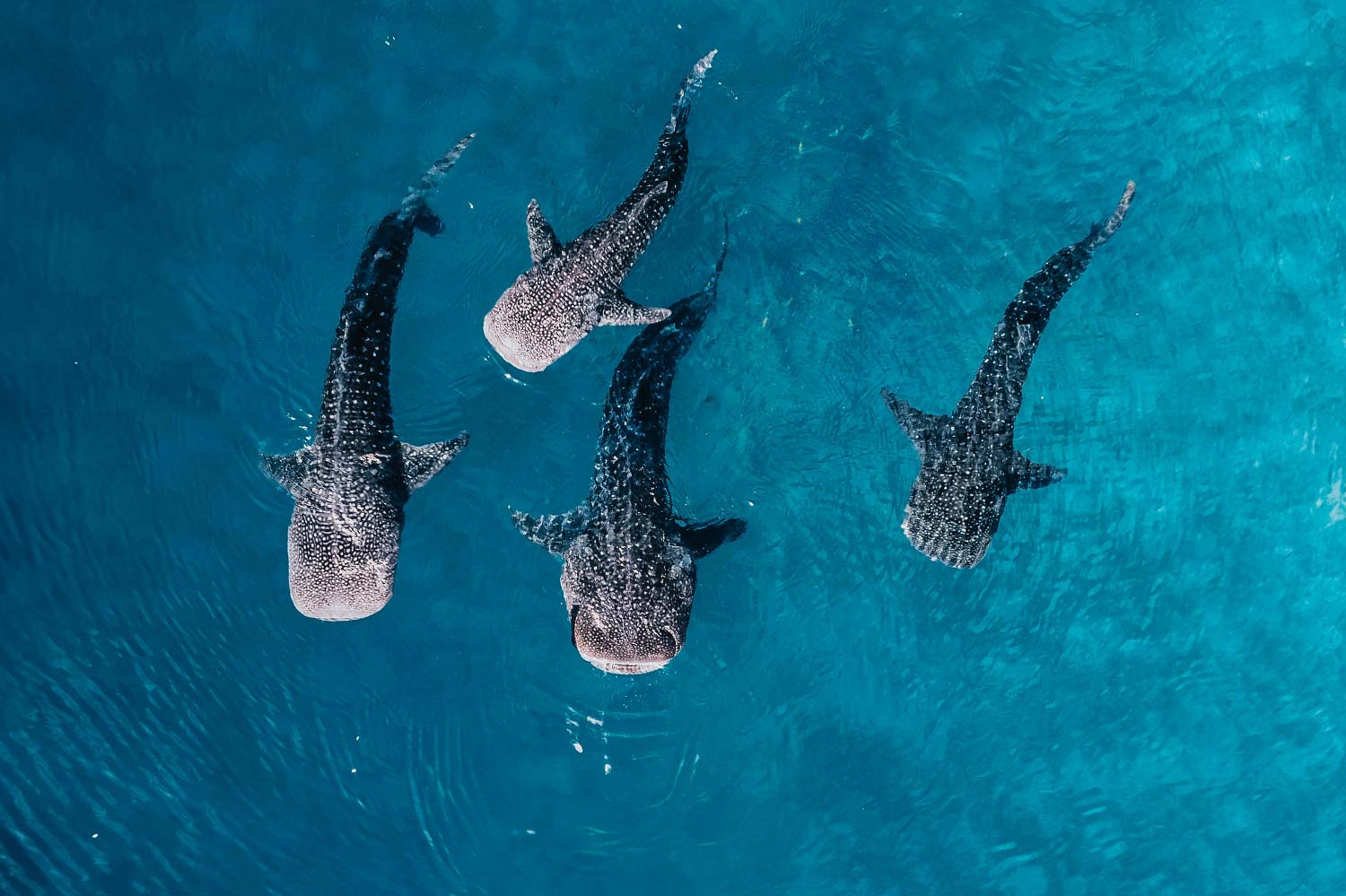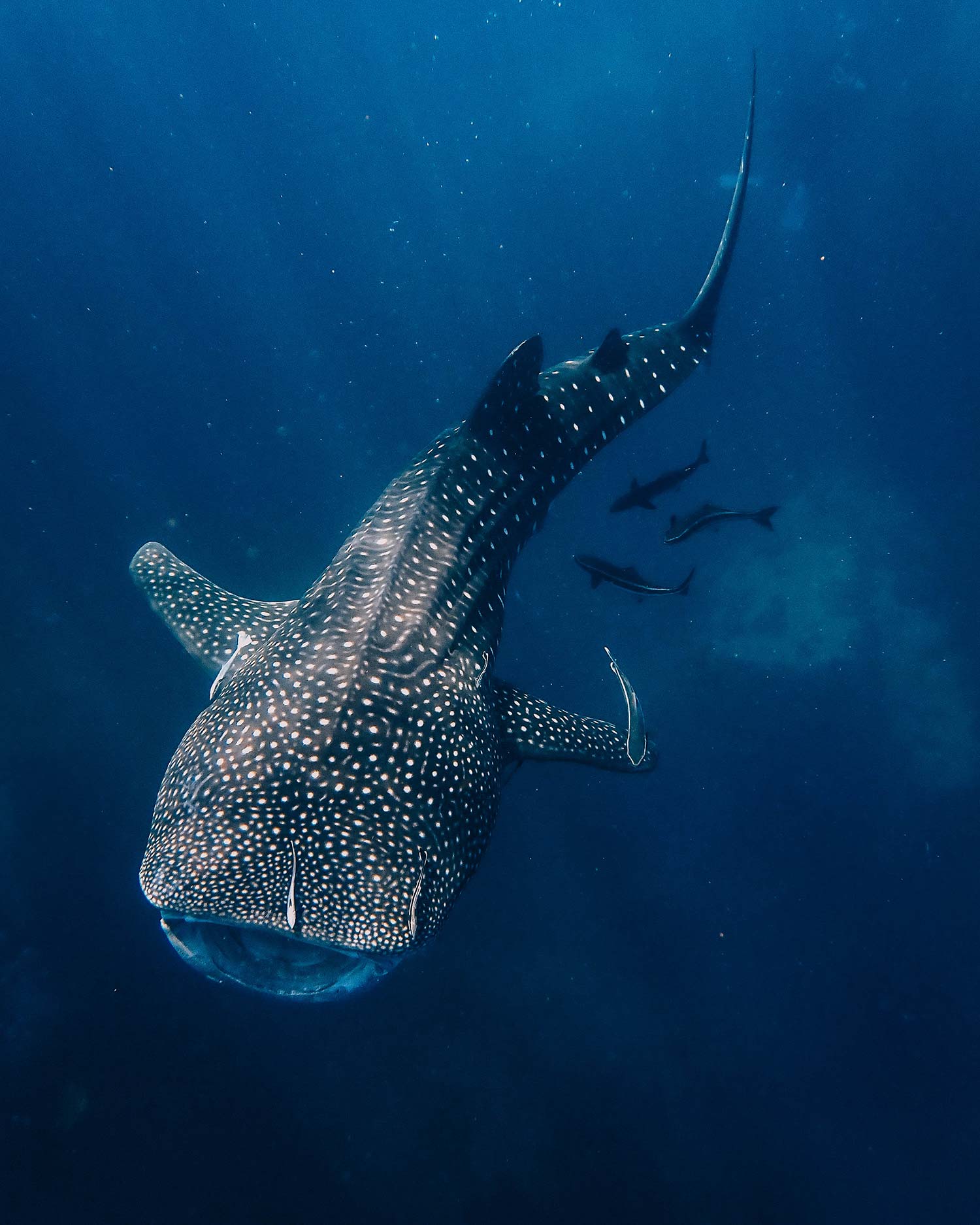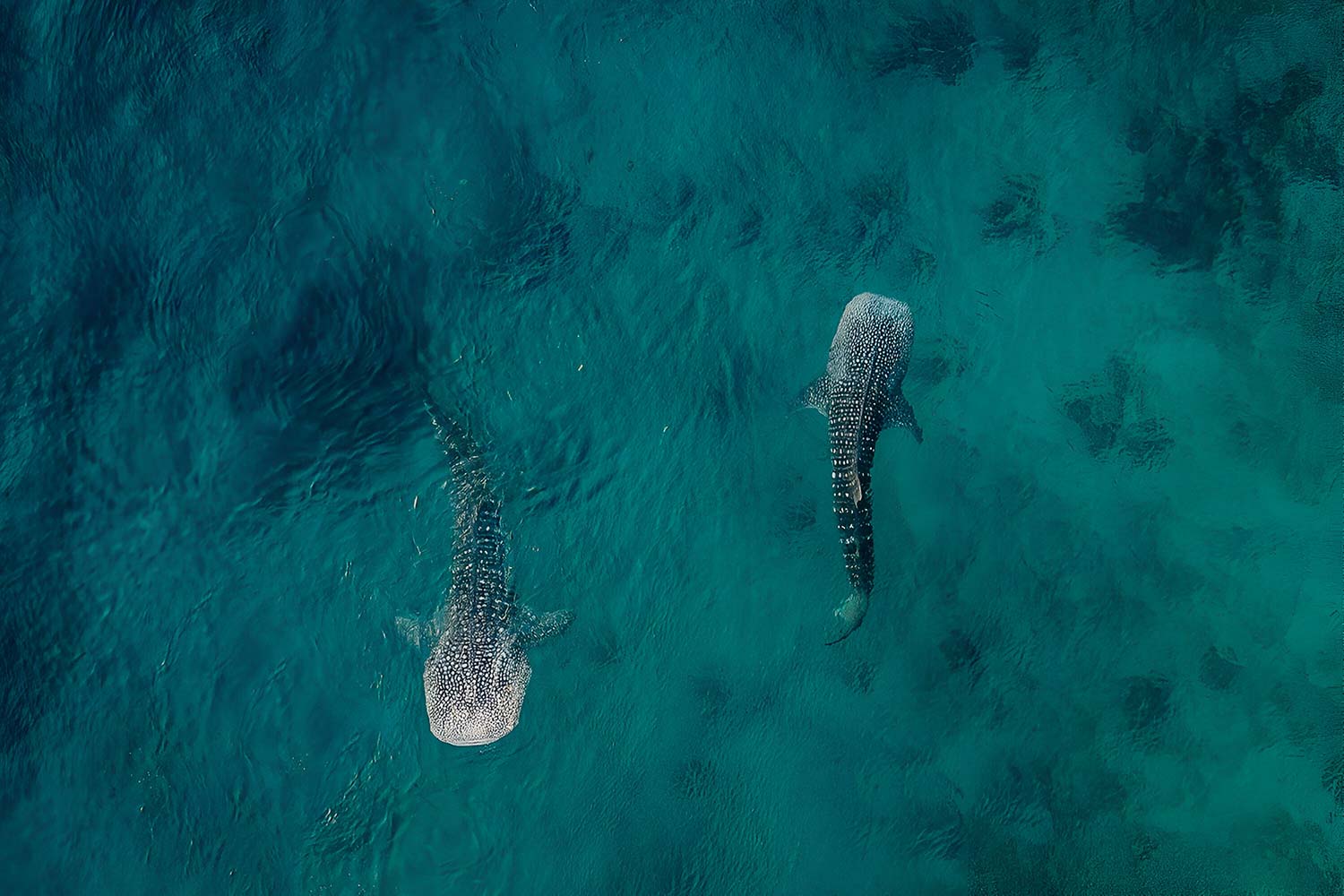
Majestic, mysterious and rarely seen, the whale shark deserves its status as one of the world’s most sought-after sea creatures.
Spotting one is a rare experience serious adventurers place high on their bucket list. The Philippines, Mexico, and Australia have been popular places to see and swim with sharks for years. But the Arabian Gulf is gaining momentum as a prime destination for whale-shark spotting and has witnessed some of the most impressive congregations.
Danish logistics giant, Maersk, has played a key role in charting the growth of the whale shark population in the Gulf.

“In 2007 Soren Stig, a production supervisor with Maersk Oil Qatar, took a photo of more than 100 whale sharks surrounding a platform and posted it on the Internet,” said Steffan Bach a marine biologist that works for Maersk. “But it wasn’t until 2010 that it became clear that something exciting was happening there.”
What researchers found were gatherings so large the numbers at first were impossible to record. Whale Shark Watch Arabia eventually recorded one school of 150 fish and a single-day count of 600 sharks cruising the Al Shaheen oil fields.
The oil platforms in the area act as artificial reefs, like a marine oasis of life amidst the desert sea. The underwater structures are richly encrusted with soft corals and sponges, encouraging thousands of colorful fish to gather. These fish attract larger predator fish, which have begun spawning in the warm waters around the fields.
Whale sharks aren’t the only large animals the waters attract. Large groups of spinner and bottle-nose dolphins are regularly seen escorting boats, leaping through their wakes and racing along the bows. The area also attracts large groups of smaller sharks like black fins that feed on the fish living among the coral growing on the rig structures.

There is only one reason for any species to gather in these numbers, perfect conditions to feed. With water temperatures topping 35°C the area is too warm for the sharks to breed, but it’s ideal for feeding on the plumes of eggs released by spawning fish.
The sharks are filter feeders, skimming hundreds of gallons of water to filter out millions of fish eggs like silent harvesters ploughing the seas. The sharks usually roam solo and are rarely sighted this way, but when they form in a group their skimming behavior makes them easily visible from boats as they move along the surface of the water.
Whale sharks go by different names based on the striking pattern of white spots along their bodies. Scientists now recognize that these spot patterns are unique to individuals and are as useful for identification as fingerprints are to humans. Researchers have recorded and indexed 350 individuals based on photos of their spot patterns, which help to track the sharks’ migratory and breeding habits.

Researchers believe the sharks habituating the Al Shaheen fields have developed a heat-coping mechanism. A mechanism that may help this endangered species survive in the coming decades when the ocean’s waters are expected to warm even further.
Perhaps like elephants and actual whales, whale sharks are so immense, so powerful that they seem invulnerable to us. Pollution of the seas, climate change and human activity have pushed the species to near-extinction. The damage done to whale shark populations in Kenya and the Philippines where operators run “swim-with-the-sharks “tours is well noted and is why the Qatari government is stringent about controlling tourist numbers.
“We know there are people all over the world that want to come and witness this phenomenon, but we also know the effects that mass tourism has had on the whale shark population,” said Dr Fellah Bin Nassar Al Thani, Qatari Minster of the environment and climate change. “Our priorities are conservation first, research second.”
